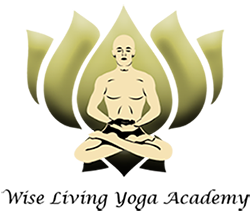tp> SvaXyayeñrài[xanain i³yayaeg>. 1.
II.1 tapaù svädhyäya Éçvarapraëidhänäni kriyäyogaù
SELF – DISCIPLINE, SELF–STUDY AND DEVOTION TO ÉÇVARA (GOD) IS YOGA OF ACTION
|
tapaù
|
austerity, fortitude, purifying action, training the senses, tempering
|
|
svädhyäya
|
self-study in the context of teachings about the Self, study of scriptures
|
|
Éçvara
|
creative source, causal field, God, supreme Guru or teacher
|
|
praëidhänäni
|
practicing the presence, dedication, devotion, surrender of fruits of practice
|
|
kriyäyogaù
|
yoga of practice, action, practical yoga
|
In the Yoga sutra different disciplines have been mentioned and many a times they are presented in groups. For example, Ashtanga Yoga (the Eight-fold Path). And under it, the Yamas & Niyamas. Kriya Yoga is another set of disciplines which are presented to us. These are three virtuous actions which are capable of reducing the Kleshas.
To start with we have to control all our physical actions. We consciously tell ourselves not to do certain things and as a result we gain strength. One of the examples is Mauna (maintaining silence). Then which is related to our thinking process. Here the suggestion is to think on some better matter. Just as for our progress in life, it is suggested we read some spiritual books and we constantly remind ourselves about more worthwhile things in life. If we do not do this, then useless and harmful things enter our mind. So far as feelings and emotions are concerned they should be directed towards God. In the Bhakti School they say that feelings are not wrong provided they are directed towards God. So there are suggestions on handling the three aspects of our personality. Wrong tendencies are corrected and diverted towards the right tendencies.
What is Kriya yoga and its objectives?
Tapa, (Fortitude), Svadhyaya (Self-study) and Ishwara Pranidhana (Surrendering to God) together constitute Kriya Yoga. It is Yoga of practice. Sometimes Kriya Yoga can also be called Karma Yoga.
Tapa: This is the chief weapon for beginners. It has been given an important place in literature where a student had to undergo some type of hardship or sacrifice; without this no development is possible. To come out of one’s old habits, one has to have some pain, both physical and mental. The mental part being, when one wants to be emotionally involved, hold onto one’s beliefs which are part and parcel of one’s thinking process. We have to get rid of these, and get rid of old habits – thoughts, feelings, and external things. Tapa is like a fire, it burns things out like melting away our past. It can be a relaxing habit as you slowly get rid of old habits.
Svadhyaya: Is the study of self. This can be achieved through listening to others, reflection, scriptural study, reading philosophical literature and repeating the mantra OM is also suggested. Observing the effects of Tapa discipline in oneself is part of Svadhyaya.
Ishwara Pranidhana: All actions whether in religious or everyday life, are surrendered to a Higher Reality. Gita says, “I am not the actor at all, all this is God’s own work”. There are many quotations to bring out this spirit that one should constantly feel oneself as an instrument of a Higher Power, with no desires. The Gita says that whatever one does, be it charity, work etc, surrender it all to God.
Its objective is to purify our physical actions, thoughts and feelings surrendering towards God.
Kriya Yoga is meant for what type of Yoga student?
Patanjali mentions three types of natures or personalities: mild, medium and intense. Students with moderate temperament in his efforts to progress in Yoga can take up Kriya Yoga.
Why does Patanjali mention Tapa, Svadhyaya and Ishwara Pranidhana as its ingredients, when they are also mentioned as part of the Niyamas in the Eight-fold Path?
Patanjali’s method is to develop gradually. Any type of activity, which puts strain on the body and mind, is forbidden. Once the system is disturbed so is its harmony. One then does not possess the right type of mind for progress. One must maintain fine balance of the inner situation. Yoga is for those who believe in moderation in diet, sleep, work, etc., and not for those who go to extremes. Bhikshu says that the Yamas & Niyamas are far wider and more comprehensive that these three (Fortitude, Self-study & Surrender to a Higher Reality) but are thought to be the best in that they are more powerful and are also able to bring about quick results.
—/—
This is an extract of:
YOGENDRA, Jayadeva. Thoughts on the Yoga Sutras of Patanjali. The Yoga Institute, Santacruz. Mumbai. 2009.
If you want to by this book, please visit our webite and make a order by email.
—/—
If you want to get trained and learn in depth about the Yoga Philosophy and techniques:
Wise Living Yoga Academy conducts Yoga Teacher Training Courses (200 hours) following the Methodology & Didactics of The Yoga Institute of Santacruz. The course is recognized by The International Board of Yoga – India and accredited by Yoga Alliance – USA (RYS-200 Level).
Please follow the links to know more about our YTT course 200 hours in 2012:
– Yoga Teacher Training Course in Minas Gerais, Brazil
– Yoga Teacher Training Course in Bali, Indonesia
– Yoga Teacher Training Course in Chiang Mai, Thailand
Namaskar!! Om Shanti!!

No Comments